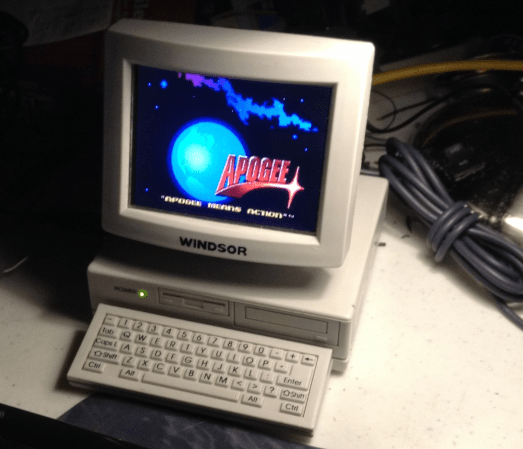
[Strider19] remembers the 90’s, and a great little novelty radio he had back then. Shaped like a computer, the radio was a typical AM/FM affair, with the monitor serving as a speaker. His original radio was long gone, but [Strider19] was able to find a replacement on everyone’s favorite auction site. With the replacement radio in hand, he set his plan in motion: Turning it into an epic Raspberry Pi Case.
The Raspberry Pi fit great, but [Strider19’s] 3.5″ composite monitor didn’t quite make it. Following in [Ben Heck’s] footsteps, [Strider19] cut the LCD’s control PCB down to fit the case. A piece of clear polycarbonate protects the fragile LCD from poking fingers. The monitor’s button board, two USB ports, and an external composite input mounted nicely inside the former battery compartment at the rear of the CRT. There’s even enough room back there to hide a USB WiFi adapter.
The Raspi itself fit perfectly into the base of the radio, along with a DC to DC converter, USB hub, real-time clock module, and a whole bunch of wires used to extend the connectors.
The final result is awesome! Thanks to a request on [Strider19’s] Reddit thread, we have pictures of Doom running on a (former) radio. Even Windows 3.1 runs under DosBox, though it took a bit of tweaking to get the display settings just right. Now [Strider19] just needs to figure out how to turn that tiny keyboard into a working model. We think some old school cell phone keyboard hacking may be in order!


 We’re pretty sure the Hackaday demographic is a a person who sees a giant tower crane lifting beams and girders above a skyline and says, “that would be fun, at least until I have to go to the bathroom.” Realizing the people who own these cranes probably won’t let any regular joe off the street into the cabin, [Thomas] and [screen Name] (see, this is why we have brackets, kids)
We’re pretty sure the Hackaday demographic is a a person who sees a giant tower crane lifting beams and girders above a skyline and says, “that would be fun, at least until I have to go to the bathroom.” Realizing the people who own these cranes probably won’t let any regular joe off the street into the cabin, [Thomas] and [screen Name] (see, this is why we have brackets, kids) 












